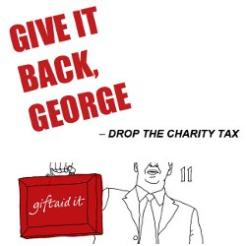A total of 340 high earners used gift aid last year to reduce their tax rate to less than 10 per cent, according to figures just released by HMRC in response to a Freedom of Information request.
And just 20 people have repeatedly used gift aid over the last five years to significantly cut their tax bill, the figures show.
HMRC published the data in response to an FoI request from Grant Addison, who is a trustee of the Woodlands Group of Churches but submitted the request in a personal capacity.
The publication of the figures finally adds some context to the government’s claim, during the row over the proposed tax relief cap, to have evidence that “a number of the country’s highest earners are using legal tax loopholes, including charitable giving, to slash their tax bills”.
Addison told civilsociety.co.uk: “It is fascinating that the whole argument with the charity sector was effectively over 340 very high-paid people in a single year – 2010/11 – and only 20 who repeatedly used gift aid to significantly reduce their tax rate.”
The analysis published by HMRC uses information reported on self-assessment tax returns, and calculates “the number of individuals with incomes over £150,000 who are reducing their tax liability below 10 per cent purely through their use of gift aid”.
Five years ago, in 2006/07, this amounted to 120 people. By 2008/09 it was 160 people, and in 2009/10 it jumped to 330, rising further to 340 in the latest financial year, 2010/11.
And around 20 of these people used gift aid relief to pay little or no tax in four of those five years, persistently using the relief to slash their tax liability.
Addison had asked HMRC to use “whatever definition of ‘very high incomes’ and ‘little or no tax’ it wished; HMRC itself chose to use the thresholds of £150,000 income and 10 per cent tax.
HMRC: 1,200 used other tax reliefs to shrink tax bills
In its response to Addison, HMRC pointed that the numbers of people cutting their tax liability to less than 10 per cent would be much higher if they included those self-assessment taxpayers who claimed other tax reliefs as well as gift aid.
"For example, in 2010/11 there would be 1,200 of these individuals," it said.
HMRC also told Addison that it was unable to answer his final question – to identify the total value of tax reliefs received by high-income earners and what proportion of that is gift aid. It explained that this data is not possible to capture centrally because some reliefs are provided outside of self-assessment – such as those attached to payroll giving or pension contributions – and some are in the form of a deduction from taxable income while others are constituted as tax credits.
FoI request initially refused
The tax office initially refused Addison’s FoI request, citing an exemption relating to the formulation and development of government policy - even though the refusal came a week after the government u-turned on the inclusion of charitable donations in the tax relief cap. At the time, HMRC said that releasing the data might affect the forthcoming consultation on the relief cap measure and could therefore prejudice effective policy development.
But Addison appealed this decision and yesterday HMRC changed its mind and released the figures. Aidan Callan, from the HMRC FoI Team, wrote: “Having further considered our position…I consider that the information you have requested is not covered by the exemption originally cited.”
Callan concluded the letter by stating: “As set out at Budget 2012, the government was keen to work with the charity sector to ensure the impact from the proposed cap was not significant.
“During these discussions it became clear that the uncertainty caused by the proposal to cap charitable reliefs was creating considerable risk to the charitable sector.
“This was not the government’s intention, and therefore it was decided to exempt charitable reliefs from the cap.
“However, the government remains committed to the principle that everyone should pay their fair share of tax. The cap on unlimited tax reliefs will stand, with the exception of charitable reliefs.”









